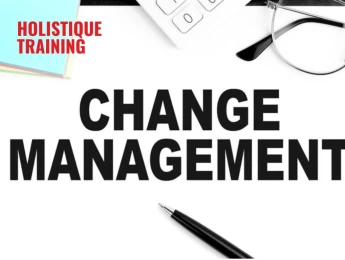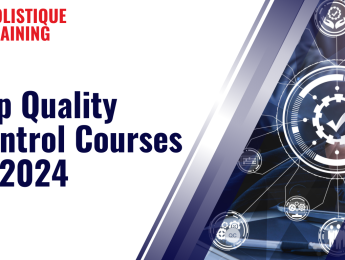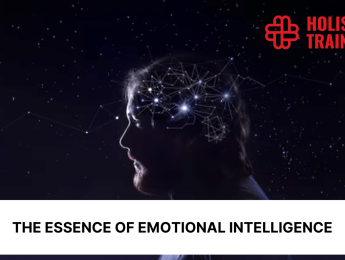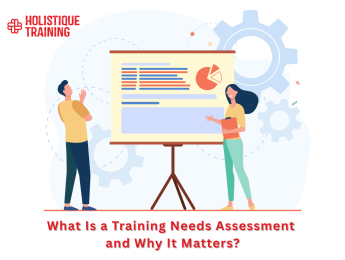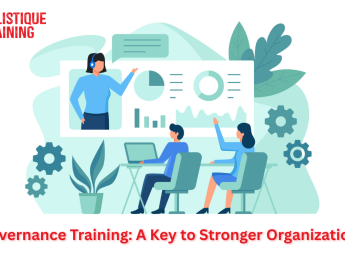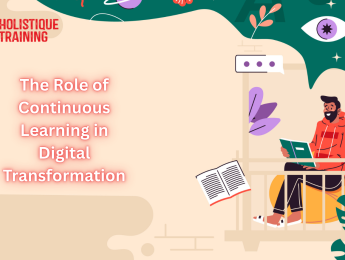- Table of Contents
- Introduction
- What Is Change Management?
- Why Is Change Management Important?
- Mitigating Resistance and Fear
- Enhancing Employee Engagement and Morale
- Minimising Impact on Productivity
- Maximising Return on Investment (ROI)
- Encouraging Innovation and Creativity
- Building Organisational Resilience
- 5 Effective Change Management Models
- 1. Lewin's Change Management Model
- 2. Kotter's 8-Step Change Model
- 3. ADKAR Model
- 4. Prosci's ADKAR Model
- 5. The Satir Change Model
- Which Change Management Model Does Your Organisation Need?
- 1. Assess the Nature of the Change
- 2. Analyse Organisational Culture
- 3. Evaluate Employee Readiness
- 4. Consider the Scale of the Change
- 5. Seek Expert Consultation
- Change Management in the Technological Era
- Understanding the Technological Landscape
- Embracing a Culture of Continuous Learning
- Transparent Communication and Collaboration
- Addressing Digital Literacy Gaps
- Balancing Automation with Human Touch
- Data-Driven Decision Making
- Emphasising Cybersecurity and Data Privacy
- Cultivating Digital Leadership
- Enhancing Change Management Skills Through Training
- Prosci's Change Management Certification Programme
- Kotter's Leading Change Programme
- Association of Change Management Professionals (ACMP)
- Conclusion
Introduction
Change is the only constant in the ever-evolving landscape of the business world. Change is inevitable, whether it's implementing new technology, restructuring the organisation, or adapting to market demands. However, managing change effectively is crucial for the success and sustainability of any organisation. In this blog post, we will delve deep into the realm of change management, exploring its significance, the various effective models, and understanding how to choose the right one for your organisation, especially in the technological era.
What Is Change Management?
Change management refers to the structured approach to transitioning individuals, teams, and organisations from their current state to a desired future state. It is a systematic process that helps employees adapt to changes in their work environment. Change management is not just about implementing new processes or systems; it's about managing the human side of change to achieve the desired outcomes.
Why Is Change Management Important?
Change management plays a pivotal role in the lifeblood of any organisation, serving as the guiding force that shapes its resilience, adaptability, and long-term success. Let's delve deeper into why change management is not just a strategic choice but an organisational imperative:
Mitigating Resistance and Fear
Change, by its nature, disrupts the familiar rhythm of work life. People often fear the unknown and resist alterations to their routines. Change management techniques, such as communication strategies, empathy training, and involving employees in the decision-making process, help mitigate this resistance. By acknowledging these concerns and addressing them proactively, change management fosters an environment where employees feel heard, valued, and supported during transitions.
Enhancing Employee Engagement and Morale
Imagine a workplace where employees are informed, engaged, and motivated. Change management ensures just that. Employees feel more engaged in the process when they are kept in the loop about the reasons behind the change, its implications, and the envisioned future state. Engagement, in turn, boosts morale. It makes employees feel like active participants rather than passive subjects of change. When morale is high, productivity increases, and a positive workplace culture emerges, creating a virtuous cycle of motivation and efficiency.
Minimising Impact on Productivity
If not managed properly, change can lead to downtime, confusion, and inefficiency. Change management strategies are meticulously designed to minimise disruptions to daily operations. Through careful planning, phased implementations, and continuous monitoring, change management ensures that the organisation continues functioning smoothly despite significant changes. This, in turn, safeguards productivity levels, preventing any substantial dips that could affect the bottom line.
Maximising Return on Investment (ROI)
Organisational changes often come with a hefty price tag—financial investments, time, and energy are poured into these initiatives. Effective change management acts as a safeguard for these investments. By providing a structured approach, it ensures that the changes are not just implemented but embedded into the organisational culture. When employees embrace the changes wholeheartedly, the organisation reaps the intended benefits, maximising the ROI on the resources invested in the change process.
Encouraging Innovation and Creativity
When executed transparently, change management nurtures an environment where innovation and creativity flourish. When employees are assured that their ideas are valued and that the organisation is open to change, they are more likely to contribute innovative solutions. Change management fosters a culture of continuous improvement, where employees are encouraged to experiment, take risks, and think outside the box. This culture of innovation is a key differentiator in today's competitive business landscape.
Building Organisational Resilience
Change is not a one-time event; it is a continuous journey. Organisations that embrace change management as a core competency become resilient entities in the face of challenges. They are better equipped to navigate the market's uncertainties, adapt to emerging trends, and capitalise on new opportunities. Change management, thus, becomes a foundational element in building organisational resilience, enabling companies to weather storms and emerge stronger on the other side.
In essence, change management is the linchpin connecting an organisation's aspirations with people's actions. It transforms lofty visions into tangible realities by aligning the workforce, processes, and culture with the organisation's strategic goals. In a world where change is not just a constant but an accelerator of progress, organisations that understand and leverage the power of change management are the ones that thrive, innovate, and lead the way into a future defined by continuous transformation and boundless possibilities.
5 Effective Change Management Models
Although a complex and multifaceted process, change management benefits immensely from the structured frameworks provided by various models. These models offer guidance, strategies, and best practices that organisations can tailor to their specific needs. Let's explore five highly effective change management models that have proven their worth in diverse organisational contexts:
1. Lewin's Change Management Model
Lewin's model, developed by psychologist Kurt Lewin in the 1940s, remains one of the cornerstones of change management. Its elegance lies in its simplicity and clear stages: unfreeze, change, and refreeze.
- Unfreeze: In this stage, existing beliefs, attitudes, and behaviours are challenged. The status quo is destabilised to prepare individuals for change. This involves creating awareness about the need for change, highlighting the deficiencies in the current state, and generating a sense of urgency.
- Change: This is the implementation phase. New processes, systems, or behaviours are introduced. Communication and support are crucial here. Employees need to understand the change, receive adequate training, and have access to resources and assistance during the transition.
Refreeze: Once the change is implemented, efforts are made to stabilise the new state. This involves reinforcing the new behaviours, acknowledging successes, and integrating the change into the organisational culture. The aim is to solidify the change and make it the new norm.
2. Kotter's 8-Step Change Model
John Kotter's model provides a comprehensive roadmap for leading organisational change. Its eight steps offer a structured approach to managing change effectively:
- Create a Sense of Urgency: Establish why change is necessary and create a compelling reason for people to join the movement.
- Form a Powerful Guiding Coalition: Assemble a diverse team of influential individuals who can champion the change effort.
- Develop a Vision and Strategy: Clearly articulate the vision for the future and outline the strategic plan to achieve it.
- Communicate the Vision: Constantly communicate the vision and strategy, addressing concerns and reinforcing the purpose of the change.
- Empower Broad-Based Action: Remove obstacles, encourage risk-taking, and empower employees to contribute to the change process.
- Generate Short-Term Wins: Celebrate small victories to boost morale and demonstrate progress toward the larger goals.
- Consolidate Gains and Produce More Change: Use the momentum from early wins to tackle bigger challenges and implement further changes.
- Anchor New Approaches in the Culture: Ensure that the new behaviours and practices are integrated into the organisational culture to prevent a return to the old ways.
3. ADKAR Model
The ADKAR model focuses on the individual changing, emphasising five key elements necessary for successful individual transitions:
- Awareness: Individuals must understand why change is happening and the need for change.
- Desire: Individuals must be motivated to participate and support the change.
- Knowledge: Individuals need the necessary knowledge and skills to implement the change.
- Ability: Individuals must have the ability to apply the knowledge and skills in their roles effectively.
- Reinforcement: The change must be reinforced to sustain the new behaviour over time, ensuring it becomes a part of the individual's routine.
4. Prosci's ADKAR Model
Prosci's version of the ADKAR model incorporates a data-driven approach, emphasising the importance of collecting and analysing data throughout the change process. Data provides valuable insights into the progress of the change initiative, identifies areas of resistance, and helps make informed decisions. Organisations can quickly adapt their change strategies by leveraging data, ensuring a more successful implementation.
5. The Satir Change Model
The Satir Change Model transforms organisational culture by addressing underlying beliefs and values. This model recognises that change often involves a period of chaos and emotional upheaval before the organisation can reach a new state of stability and productivity.
- Late Status Quo: The initial stage is when the organisation operates within its existing norms and practices.
- Resistance: As the need for change becomes apparent, resistance and uncertainty arise. This stage is characterised by anxiety and apprehension among employees.
- Chaos: Change disrupts the established order, leading to confusion and emotional turmoil. This phase is challenging but essential for breaking down old structures.
- Integration: With supportive leadership and clear communication, employees start to adapt to the new ways of working, leading to a sense of stability and understanding.
- New Status Quo: In this stage, the organisation reaches a new state of equilibrium. The changes are integrated into the culture, and employees embrace the new norms, behaviours, and practices.
Incorporating elements of these models or even combining them based on the specific context of the change can significantly enhance an organisation's ability to manage transitions effectively. Each model offers a unique perspective, allowing organisations to approach change management with a tailored and strategic mindset, ensuring a higher likelihood of success in the ever-evolving business landscape.
Which Change Management Model Does Your Organisation Need?
Selecting your organisation's appropriate change management model is not a one-size-fits-all decision. Each organisation is unique, with its own culture, challenges, and specific needs. Understanding the intricacies of your organisation's situation is paramount in choosing the right change management approach. Here’s how you can determine which change model aligns best with your organisational requirements:
1. Assess the Nature of the Change
Different changes demand different strategies. If the change is relatively straightforward, such as implementing a new software system or a minor process adjustment, Lewin's Change Management Model might suffice. Its simple yet effective approach can help employees adapt to the change with minimal disruption.
For complex transformations like a major organisational restructuring or a shift in core values, Kotter's 8-Step Change Model could be more appropriate. Its comprehensive steps provide a clear path for navigating intricate changes, ensuring all aspects are thoroughly addressed.
2. Analyse Organisational Culture
Organisational culture plays a vital role in change management. If your organisation values transparency, employee engagement, and a bottom-up approach, models like the ADKAR Model, which focuses on individual change, might be well-suited. These models emphasise aligning individual beliefs and attitudes with organisational goals, ensuring a smoother transition.
However, if your organisation's culture embraces innovation, risk-taking, and decisive leadership, a model like the Satir Change Model might be effective. This model recognises the chaos and emotional upheaval inherent in significant changes, making it suitable for organisations open to challenging their existing norms and beliefs.
3. Evaluate Employee Readiness
Understanding your employees’ readiness for change is essential. If your employees are tech-savvy, adaptive, and open to learning, incorporating Prosci's ADKAR Model, which emphasises a data-driven approach to individual change, could be beneficial. This model allows you to gather insights into how employees adapt to the change, enabling you to make data-informed decisions.
On the other hand, if your employees are resistant or apprehensive about the change, models like Lewin's or Kotter's, which focus on creating a sense of urgency and empowering employees through communication and involvement, can help address these challenges.
4. Consider the Scale of the Change
The magnitude of the change initiative is a crucial factor. A model like Lewin's may be adequate for smaller, incremental changes. It provides a systematic approach to transitioning individuals and teams without overwhelming them.
For large-scale transformations affecting multiple departments or the entire organisation, Kotter's 8-Step Change Model emphasises forming a guiding coalition and empowering broad-based action and offers a robust framework for managing the complexity of such changes.
5. Seek Expert Consultation
If you find it challenging to determine which model best aligns with your organisation's needs, seeking consultation from change management experts or professionals can provide valuable insights. These experts can assess your organisation's specific context, culture, and goals and guide you towards the most suitable change management approach.
In summary, choosing a change management model should be a well-informed decision rooted in a deep understanding of your organisation's unique characteristics. By carefully evaluating the nature of the change, your organisational culture, employee readiness, and the scale of the initiative, you can identify the most fitting model. Flexibility is key; you can also combine elements from different models to create a customised approach tailored to your organisation’s specific requirements. Ultimately, a thoughtful and strategic choice of the change management model ensures a smoother transition, higher employee engagement, and increased chances of successfully achieving your organisational objectives. The numbers agree, too. In fact, according to The Change Management Blog, organisations that incorporate change management are 47% more likely to achieve their objectives than the 30% that did not implement it.
Change Management in the Technological Era
Organisations face unique challenges and opportunities in today's rapidly advancing technological landscape. The digital era brings forth innovations such as artificial intelligence, automation, big data analytics, and the Internet of Things (IoT), reshaping industries and business processes. Adapting to these technological changes is not merely a choice—it's a strategic imperative. Change management in the technological era requires a nuanced understanding of both the potential benefits and the human concerns associated with these advancements.
Understanding the Technological Landscape
Technological advancements can revolutionise business operations, enhancing efficiency, productivity, and customer experiences. However, these advancements often disrupt traditional workflows and roles. Employees might fear that automation and AI will render their skills obsolete, leading to resistance. Effective change management acknowledges these concerns and ensures that employees see technology as an ally rather than a threat.
Embracing a Culture of Continuous Learning
According to a Change Management study, CIOs identify culture as the primary obstacle to successful change. The study also reveals that 42% of CEOs spearheading digital transformations anticipate significant cultural shifts to ensure success. To truly prosper in the technological era, fostering a culture of continuous learning is the way to go. Providing employees with opportunities for upskilling and reskilling equips them with the necessary digital skills and boosts their confidence in dealing with new technologies. Learning programs, workshops, and certifications can empower employees to adapt to the digital tools and platforms essential for the organisation's growth.
Transparent Communication and Collaboration
Clear and transparent communication is the bedrock of successful change management in the digital age. Organisations need to communicate technological changes' what, how, and why. Employees must understand the benefits of these changes, both for the organisation and their individual roles. Moreover, involving employees in the process and valuing their input fosters a sense of ownership and collaboration, making them more receptive to technological shifts.
Addressing Digital Literacy Gaps
Digital literacy varies widely among employees. Some may be tech-savvy, while others might struggle with basic digital tasks. Change management strategies must encompass training programs tailored to different skill levels. Interactive online modules, workshops, and peer-to-peer learning can bridge the digital literacy gaps, ensuring that all employees feel competent and confident in using new technologies.
Balancing Automation with Human Touch
While automation and AI bring efficiency, there are areas where the human touch is irreplaceable—empathy, creativity, and critical thinking, for instance. Change management should emphasise the importance of these human skills. It's not just about teaching employees how to use technology; it's about instilling a mindset that values their unique human abilities and encourages them to apply these skills alongside automation.
Data-Driven Decision Making
Data is invaluable in the technological era. Change management can leverage data analytics to understand employee sentiment, monitor technological implementations' progress, and identify resistance areas. Data-driven insights enable organisations to make informed decisions, adjust change strategies in real-time, and provide targeted support where needed most.
Emphasising Cybersecurity and Data Privacy
With the power of technology comes the responsibility of safeguarding sensitive information. Change management in the technological era should encompass training on cybersecurity best practices and data privacy policies. Employees need to understand the risks associated with digital tools and learn how to protect both their personal data and the organisation’s information assets.
Cultivating Digital Leadership
Change management efforts in the technological era must extend to leadership development. Digital leaders are essential in guiding their teams through the complexities of technological changes. These leaders should possess a deep understanding of emerging technologies, empathy for their team members, and the ability to inspire and motivate in the face of digital disruption.
In summary, change management in the technological era is not just about adapting to new tools and systems—it's about transforming the organisation’s culture, empowering employees, and confidently embracing the future. Organisations can navigate the digital revolution with agility and empathy by nurturing a learning culture, fostering transparent communication, addressing digital literacy gaps, and valuing the human element alongside automation. When done effectively in the technological era, change management ensures a smooth transition and positions the organisation for innovation, growth, and sustained success in an increasingly digital world.
Enhancing Change Management Skills Through Training
In the dynamic landscape of modern business, mastering change management is not just an advantage but a necessity. Organisations recognise the pivotal role of their leaders in successfully navigating these transformations. To equip leaders with the essential skills, training courses tailored to change management have become invaluable resources.
Prosci's Change Management Certification Programme
Prosci's program stands as a beacon for change management education. It offers a comprehensive curriculum delving into the intricacies of the ADKAR Model and Prosci's own change management methodology. The program, available both online and in-person, provides participants with a robust toolkit, honing their abilities to manage change effectively. Focusing on individual transitions, this training equips leaders with the skills to guide their teams through change's emotional and practical aspects.
Benefits | Description | Impact on Organisations |
Enhanced Productivity | Efficient workflows, increased task completion | Streamlined operations and output |
Higher Employee Morale | Engaged workforce, positive workplace culture | Boosts job satisfaction, reduces turnover |
Greater Adaptability | Quick response to market changes, innovations | Competitive edge, flexibility in markets |
Improved Leadership | Effective change management skills among leaders | Stronger guidance, successful transitions |
Maximised ROI | Efficient use of resources, minimise wastage | Increased profitability, resource optimisation |
Table 2: The benefits of change management training
Kotter's Leading Change Programme
Harvard Business School's Leading Change Program is a testament to the significance of leadership in driving transformative initiatives. This programme immerses participants in Kotter's renowned 8-Step Change Model. Leaders emerge from this training armed with theoretical knowledge and practical insights, enabling them to confidently spearhead change efforts within their organisations. The program’s emphasis on creating a sense of urgency and fostering a culture of innovation aligns perfectly with the demands of the technological era.
Association of Change Management Professionals (ACMP)
The ACMP stands at the forefront of professional associations dedicated to change management. Their training and certification programs encompass diverse change management models, ensuring a holistic approach to skill development. Participants delve into various models, gaining a profound understanding of the nuanced strategies essential for managing change effectively. The ACMP’s training empowers leaders to adopt adaptive strategies, tailoring their approaches based on the specific needs of their organisations.
Incorporating these training courses into an organisation’s leadership development initiatives fosters a culture of change readiness. Leaders equipped with Prosci's methodologies, Kotter's strategic insights, and the diverse perspectives from ACMP's programs are better prepared to steer their teams through the complexities of change. As organisations evolve in the technological era, these training programs serve as invaluable investments, ensuring that leaders are not just keeping pace with change but actively driving transformative journeys within their organisations. By enhancing their change management skills, leaders become the catalysts for organisational success, ushering in a future where adaptability is not just a choice but a defining trait of thriving businesses.
Conclusion
Change management is not a one-size-fits-all solution. It's a nuanced process that requires careful planning, empathetic leadership, and a deep understanding of the organisation's dynamics. By choosing the right change management model and tailoring strategies to the organisation's specific needs, businesses can navigate the complexities of change, whether it's in response to technological advancements or other evolving market demands. Embracing change as a continuous and essential aspect of organisational growth can position businesses for long-term success in the dynamic and competitive landscape of the technological era.
If you want to take your skills to the next level, consider enrolling in our exclusive course, ‘Perfecting Your Management and Leadership Skills.’ Designed to empower leaders with the most cutting-edge strategies and insights, this course goes beyond traditional approaches. It’s not just about managing change; it’s about leading with vision, driving innovation, and fostering a culture of continuous adaptation. With our expert guidance, you’ll navigate change effectively and transform challenges into opportunities, propelling your organisation towards unparalleled success. Embrace change, empower your leadership, and embark on a transformative learning journey with us today. Your organisation’s future awaits your perfected skills!


